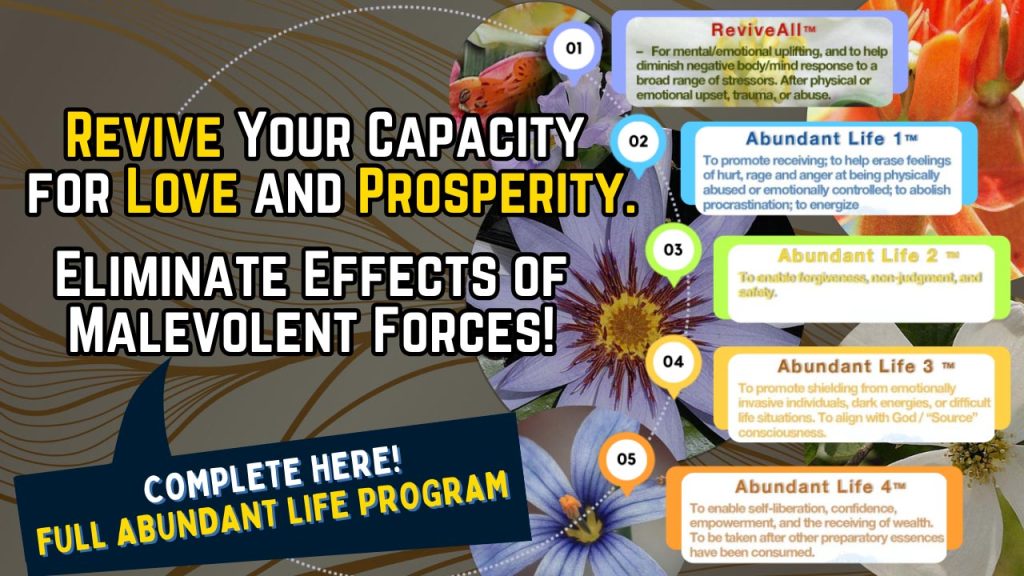17 Habits of the Self-Destructive Person
(+ How to Stop)
by ALETHEIA LUNA / 8 MIN READ / 126 COMMENTS
Why do I refuse help from people who have my best interests in mind?
Why do I continue unhealthy habits that I know will eventually incur permanent damage?
How often have you asked yourself these questions?
The subject of self-destructive behavior is a daunting topic. It’s like a dark gremlin that lurks in the corners of existence; it hides in those places that we train ourselves to overlook and intentionally avoid.
But the more we put off facing our self-destructive tendencies, the more they consume us.
Are you ready to face this part of you? Are you ready to get some answers and reach out for help?
Why Are We Self-Destructive? (+ My Experience)
I’m not the first, and I certainly won’t be the last person to admit that I’ve been (and in some ways still am) a self-destructive person.
From pushing away people I love and housing self-defeating mindsets, to repeatedly self-harming in my teenage years … I’ve been down this dark alley more than once. As I’ve grown, however, I’ve realized that self-destructive behaviors are expressions of our Shadow Selves, springing from low self-esteem, low self-worth, and even self-hatred.
While psychologists speculate that self-sabotaging behaviors could be coping mechanisms (i.e, to deal with stress, pressure, social demands, etc.), others consider self-destructive behavior as ways of maintaining comfort zones due to lack of confidence or feelings of unworthiness (e.g., staying at the familiar bottom of the social ladder).
17 Symptoms and Habits of the Self-Destructive Person
Self-destructive behavior comes in many guises, some extreme, some not so extreme. But in order to continue internally evolving and improving your life (as well as those around you), it’s best if you look at your devils right in the face.
Symptoms and/or habits of self-destructive behavior include the following:
1. Housing self-defeating mindsets
This is an unconscious form of self-destructive behavior because it results in self-fulfilling prophecies. Examples include thoughts such as, “I’m going to fail, I just know it,” “I’ll never get out alive,” “This will completely destroy me,” etc.
2. Failing to take action
This is a passive symptom, but still self-destructive in nature. When we knowsomething is bad for us, but fail to take any action or steps to remedy the issue, we are essentially setting ourselves up for, and guaranteeing, failure.
3. Over-eating
A distressing habit that results in many long-term health issues.
4. Under-eating
Many under-eaters fool themselves into thinking they’re benefiting themselves. The reality is that under-eating is usually a band-aid for serious self-image and other psychological issues.
5. Forced incompetence
This means portraying oneself as unintelligent or incapable of successfully achieving something. Forced incompetence usually stems from a lack of confidence in one’s abilities and can function as a coping mechanism (i.e., to deal with academic pressure).
6. Going out of your way to harm other
What goes around comes around, as they say, and the negative influence you have on others, whether by words or deeds, will eventually manifest itself in your own life (e.g., through sicknesses, tragedy, legal issues, isolation).
7. Self-harm
This is an extreme form of self-destructive behavior. Self-harm stems from low self-worth and the desire to cope with emotional pain in a physical way.
8. Self-pity
This is an unconsciously manifested form of self-destructive behavior. Self-pity is destructive because it encourages us to remain inactive (i.e., wallowing in our misfortunes), rather than encouraging a proactive approach towards life.
9. Drug and alcohol abuse
A self-evident form of destructive behavior, drug and alcohol abuse creates endless misery in the lives of addicts and their friends and family members.
10. Social suicide
While this is not always committed consciously, social suicide is the act of deliberately alienating yourself from your peers. This could be through a variety of irritating, repelling or antisocial behaviors.
11. Hiding from emotions
Failing to acknowledge negative (and sometimes positive) emotions creates a host of mental, emotional, and physiological illnesses. This is another form of unconsciously manifested self-destructive behavior.
12. Refusing to be helped
Pushing away advice, refusing to go to rehab, avoiding the psychologist … not wanting to be helped cries “I don’t care about my well-being!” and screams “self-sabotage!”
13. Unnecessary self-sacrifice
Some people are in love with their misery because that is all they have known for a large portion of their lives. Unnecessary self-sacrifice or being a martyr is a good way of making us feel “noble” and “altruistic” while masking the actual act of self-sabotage (which is giving up on the hopes, dreams, and passions that make us truly happy).
14. Spending too much
Whether through chronic gambling or constant eBay purchases, overspending may seem unusual to have on this list, but is nevertheless a form of self-destructive behavior that limits one’s freedom and peace of mind.
15. Physical neglect
Getting poor sleep, refusing to exercise, eating unhealthy food, and failing to maintain the general well-being of your body are all classic signs of self-destructive behavior.
16. Mental neglect
Refusing, avoiding or failing to confront your psychological health issues (e.g., stress, anxiety, depression, paranoia, OCD, etc.) delays the healing process, resulting in the perpetuation of long-term issues.
17. Sabotaging relationships
This is a complex one as it involves a large variety of destructive behaviors such as jealousy, possessiveness, emotional manipulation, neediness, violence and so forth. When we don’t feel worthy of love, we unconsciously manifest this in our relationships through the way we choose to behave.
Are You Broken?
If you have identified with most of the above signs, you might feel your stomach sink and a dark cloud of sadness/resentment wash over you.
You might start thinking that you’re fundamentally “broken” or something is severely wrong with you. But please understand that it’s normal to identify with a large number of the above signs. There’s nothing wrong with you. You’re not broken. You’re not a lost cause. You’re simply human. And that’s totally okay.
Why is it normal to possess a large majority of self-destructive signs? The answer is that they’ve either been programmed into you from your family or society, or they were unconsciously adopted by you as a defense mechanism to protect against mental and emotional pain. In other words, it’s not your fault and you aren’t to blame. You didn’t choose to be self-destructive, did you? You didn’t think, “hmm, I think I’m going to be self-destructive now,” did you? It’s just what happened.
The goal isn’t to feel terrible about yourself, the goal is to see that “it is what it is” and find ways to reverse, undo, and triumph over your self-destructive tendencies. We’ll explore some ways of doing that next …
How to Stop Being Self-Destructive

While I can’t give you a magical cure, I can give you some ideas, inspiration, and a few tried-and-tested paths to follow. Try all of them systematically or select a few and work with them consistently.
On average, it takes around 66 days to establish a new habit according to what researchers have found. So make it your goal to stick with at least one of these activities for two months.
Here are the practices:
- Keep a self-reflection journal every day – Journaling has numerous mental health benefits, and it’s a powerful way of increasing your self-awareness. Self-awareness is a crucial ingredient in overcoming self-destructive tendencies! Read more about journaling and the practice of self-awareness.
- Practice meditation or mindfulness – There’s a reason why you keep hearing about these two practices and it’s because they work! Even if you struggle to meditate traditionally, there are endless forms of mindfulness meditation out there that might spark your interest. Examples include walking meditation, mindful art therapy, chanting mantras, guided journeys, color visualization, etc. If you don’t know where to start, I recommend downloading a meditation app such as InsightTimer, Calm, or Headspace. I started off with these apps, and they helped me tremendously.
- Do some emotional catharsis – Sometimes, the reason why we’re self-destructing is because a deeper emotion (such as anger, grief, passion) isn’t being expressed. Just think of a kettle: the more it boils, the more steam is released. But if that kettle had no way to release that steam, it would quickly explode! The same thing applies to you: you need a pressure valve, a way to channel your pent up emotions. When you don’t channel those buried emotions in a healthy way, they come out in self-destructive behaviors. So find something you enjoy doing that requires intense mental or physical effort. Examples include boxing, running, singing, dancing, creating art, or plain old screaming and crying (privately of course). One unconventional form of catharsis is called dynamic meditation.
- Focus on self-love and self-care – Self-love is a basic attitude of kindness toward yourself: it is the practice of taking care of your emotional needs. Self-care is generally more oriented towards your body. It involves eating properly, getting enough sleep, drinking adequate water, wearing comfortable clothing, staying healthy, etc. Both self-love and self-care go beautifully hand-in-hand as allies against self-destruction. Here are two amazing guides you can read on learning how to love yourself and practicing self-care.
- Shift your mindset – Realize that self-destructive behavior is a sign of inner shadows and core wounds that have gone haywire. Be kind to yourself and realize that you have a metaphorical thorn lodged in your side. You’re trying to get it out, but you don’t know how – and that leads to self-destructive behavior. (It’s a desperate attempt to ease the pain you’re carrying inside.) By shifting your mindset from blame and self-condemnation, to self-compassion, you’ll be empowered to make choices that align with your highest good.
- Seek out professional help – There’s only so much an article on the internet can do to help you. While you’ve taken a wonderful step towards health and healing, the next step will help even more. Seeking out guidance in the form of a therapist or counselor will aid you with ongoing support and tools. These, in turn, will transform your life little by little. And soon, you’ll look back on this behavior with a gentle smile and a sigh of relief, proud of your ability to overcome it.
***
The self-destructive person exhibits conscious and unconscious behaviors that sabotage their own health, happiness, and long-term wellbeing. But please remember that these harmful behaviors are a symptom of a deeper wound that needs to be shown compassion, and needs to be expressed in a healthy way.
It’s important to remember that you’re not alone. Like me, you probably can identify with a couple or more symptoms and habits on this list.
What are your experiences with self-sabotage? I’d love to hear your stories below! Let’s help others not feel so alone.
![]()
About Aletheia Luna
Aletheia Luna is an influential psychospiritual writer whose work has changed the lives of thousands of people worldwide. After escaping the religious sect she was raised in, Luna experienced a profound existential crisis that led to her spiritual awakening. As a spiritual counselor, diviner, and author, Luna’s mission is to help others become conscious of their entrapment and find joy, empowerment, and liberation in any circumstance. [Read More]
Come Follow Us on Twitter: https://twitter.com/TheNewAgora
Come Like Us on Facebook https://www.facebook.com/4thenewagora/
And Sign Up for our Newsletter:
https://mailchi.mp/7de35b29504b/thenewagora-thenewnow-fanlist




















